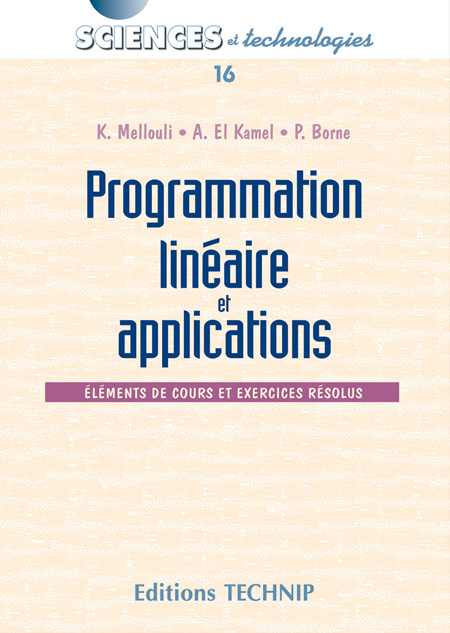Programmation linéaire et applications
Eléments de cours et exercices résolus
Authors : BORNE Pierre , EL KAMEL Abdelkader , MELLOULI Khaled
ISBN : 9782710808442
Publication date : March 2004
 Add to cart 31 $ (29 €)
Add to cart 31 $ (29 €)
Cet ouvrage propose une approche simple et systématique de la programmation linéaire, dont le but est l’optimisation d’un critère linéaire par rapport aux paramètres du problème étudié en présence de contraintes linéaires. La méthode utilisée est illustrée par de nombreux exemples de mise en œuvre, intéressant particulièrement les domaines liés à l’allocation et à l’optimisation des ressources concernant la finance, l’économie et la production. Le cas de la programmation linéaire pour des problèmes mélangeant variables réelles, entières et/ou booléennes est également envisagé. Cet ouvrage s’adresse aux étudiants de l’enseignement supérieur, premier et second cycle, concernés par les problèmes d’optimisation, en particulier pour l’allocation de ressources.
Contents :
1. Formulation. 2. Résolution graphique. 3. Méthode du simplexe (maximisation). 4. Méthode du simplexe et problèmes irréguliers. 5. Post-optimalité. Corrigés des exercices
 0
0

 Newsletter registration
Newsletter registration


 Partager
Partager
 Tweeter
Tweeter
